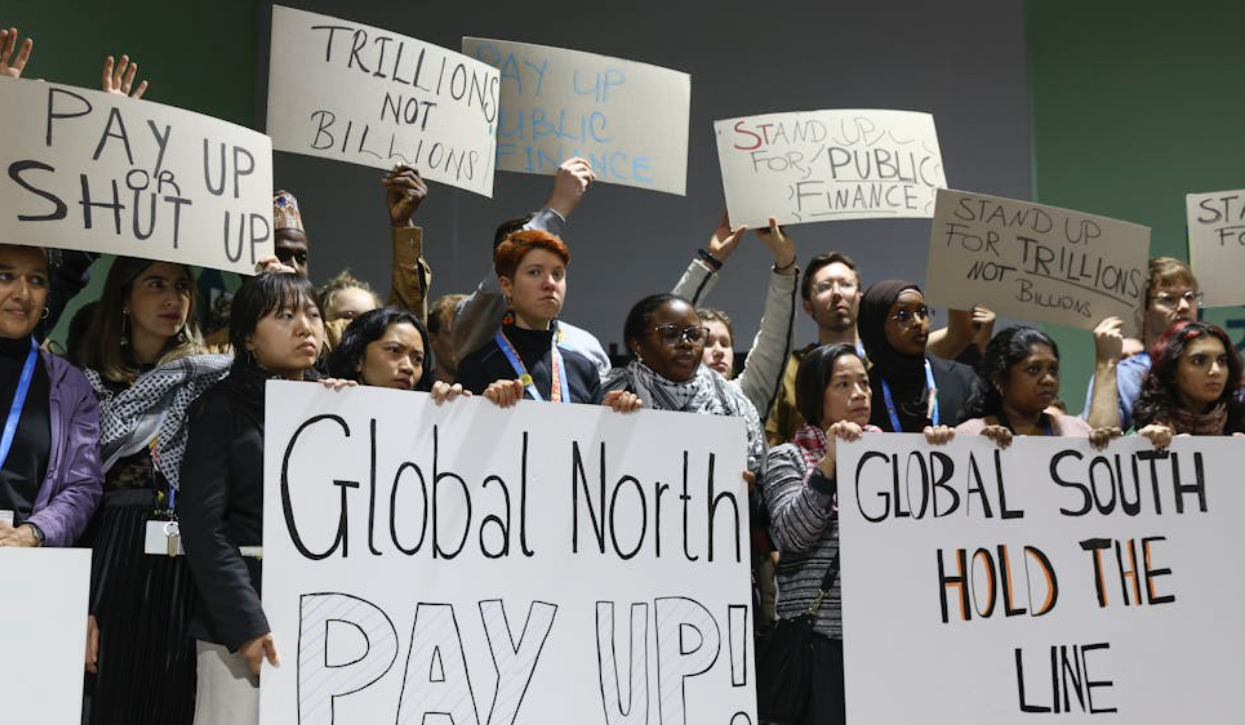How To Assess Outcome Of COP28

Gernot Wagner
Actionism.” That word greeted arriving passengers at Dubai International Airport, the port of entry for the vast majority of the 100,000 or so climate negotiators, activists, industry lobbyists, and others attending this year’s United Nations Climate Change Conference and the events around it. It flickered from ads in the oddly underused metro connecting the airport directly to the official COP28 venue, and it was displayed on the occasional billboard along the two main “roads” spanning the length of the city, each with at least a dozen lanes. Apparently, the neologism is meant to convey not just action, but “vigorous action to bring about change.”
This attempt to rebrand an everyday word encapsulates COP28, surely one of the most surreal climate summits to date. Between Dubai’s ostentatious fossil-fueled wealth, misguided car-centric city planning, and the fact that COP28 itself was led by a fossil-fuel CEO, it has been much easier than in prior years to be cynical about the whole exercise. But cynicism will not help us address climate change, and while it was tough to spot amid all the greenwashing, there was some real progress on the ground. Two weeks before the conference, the United Arab Emirates opened the world’s largest single-site solar plant, with two gigawatts of panels spanning 20 square kilometres and powering almost 200,000 energy-hogging UAE homes for $0.0132 per kilowatt-hour – one of the lowest prices for electricity anywhere delivered at this scale.
Energy efficiency
Nor is this the only development to applaud. The renewables lobby is celebrating a pledge, supported by 118 governments, to triple global renewable-energy capacity and double the annual rate of energy efficiency improvements by 2030. The nuclear industry also has reason to cheer, with 22 governments pledging to triple global nuclear-energy capacity by 2050. Both commitments are good news for the climate. The world needs both renewables and nuclear in order to cut fossil-fuel use quickly. Building low-carbon capacity fast is what matters, more so than whether the COP28 agreement includes the words “phase out,” “phase down,” or a sentence about “transitioning away from fossil fuels.”1
Precisely because the world needs to cut fossil-fuel use altogether, it is more difficult to evaluate another pledge made this month to reduce methane (CH4). While carbon dioxide (CO2) is the biggest overall climate culprit, CH4 will be responsible for as much as 45 per cent of the planetary warming this decade – even though it doesn’t remain in the atmosphere for nearly as long as CO2. So it was much more than just well-timed symbolism when the US Environmental Protection Agency announced on December 2, the first Saturday of COP28, that it had finalised a long-awaited rule to cut CH4 emissions from the oil and gas sector by around 80 per cent over 15 years.
That news came with a $1 billion commitment to help smaller countries address the same problem, leading several to join the Global Methane Pledge (launched at COP26 in Glasgow and strengthened at COP27 in Sharm El-Sheikh) to cut total CH4 emissions 30 per cent by 2030. And all this comes on the heels of an EU law that sets tight CH4 leakage standards. In classic EU regulatory fashion, that provision should reach well beyond European borders. December 2 also brought a major industry announcement. Around 50 of the world’s largest oil and gas firms – including ExxonMobil, Shell, SaudiAramco, and ADNOC (the company led by Sultan al Jaber, the COP28 president) – pledged to all but eliminate their own CH4 emissions. That means addressing both venting and the routine flaring of CH4. Though the latter practice has been banned for two decades in the UAE, it remains a major contributor to the constant haze and air pollution engulfing Dubai. Here’s hoping that “actionism” will finally turn this pledge into reality.
Climate campaigners are understandably questioning the industry’s motives, and emphasising that such pledges could detract from the need to cut both CH4 and CO2 emissions from fossil-fuel use, not merely from its production. They can cite comments like one by Occidental Petroleum CEO Vicki Hollub, who told S&P Global’s CERAWeek conference earlier this year that Occidental’s purchase of direct-air-capture technology “gives our industry a license to continue to operate for the 60, 70, 80 years that I think it’s going to be very much needed.”
Narrow technical perspective
None of that diminishes the real, positive effects that would come from slashing CH4 emissions this decade (or from scaling up carbon-removal technologies, for that matter). But the question of how useful the COP process has been raises an even broader, almost philosophical one: How should we think about CO2, CH4, or any other emissions reductions that are ostensibly “costless” (or even profitable) from a narrow technical perspective, but that have yet to happen? After all, oil and gas companies here are committing to stop wasting gas, one of their two main products – and an increasingly important and lucrative one at that. Ideally, it would not take the performative circus of COP to achieve these kinds of agreements. Yet, as the CH4 pledge shows, apparently it does.
The problem is that coordinating pledges across industry players, civil society, and governments to measure, report, verify, and ultimately enforce action via a unified set of standards takes time and effort. It is for good reason that the acronym-laden COP process has turned “MRV” into a verb. The task now will be to MRV(E) – measure, report, verify, and enforce – the pledges on renewables, nuclear, and CH4 coming out of COP28, while also keeping the larger picture in mind. There are clear hurdles to overcome, even – or perhaps especially – with seemingly costless emissions reductions that industries themselves have an interest in adopting. The key task for international gatherings, as for low-carbon technologies themselves, is to focus on getting costs down, and fast. Judged by that benchmark, COP28 may yet prove to be at least as important a stepping stone in the global clean-energy race as any of the previous UN climate summits.
(Wagner is a climate economist at Columbia Business School.)
-Project Syndicate


















Facebook Comments